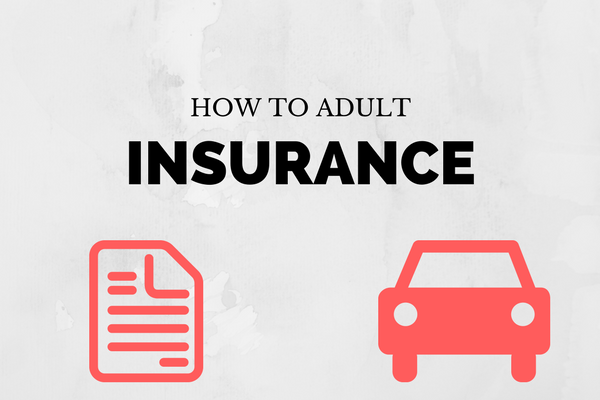
Photo by Grant Baker
Make choosing plans for the future less daunting with this guide to insurance
How to Adult: Insurance
Insurance tends to confuse young adults when heading into the real world. With it comes a long list of confusing words, a huge variety of types of insurance and different plans on each type. To help ease confusion, we’ve compiled a list of common terms and a brief description of a few types of insurance.
To get started on the topic, here’s some terms you’ll need to know:
Deductible– The amount the insured must pay before the insurance company will cover costs. With high deductibles, there are often lower premiums
Premium– The monthly cost of insurance for an individual or business
Provider– the person/company providing medical services
The insured– the person receiving medical services
In network– The doctor providing care does have a contract with the insurer. These cost less for the insurer and, by extension, the insured
Out of network– The doctor providing care does not have a contract with the insurer
Preexisting condition– a medical condition, known by the insured before entering into a health insurance plan
Copayment– both the insured and the insurer pay for a medical expense, the insured pays a fixed amount and the insurer covers the rest
Out of pocket maximum– the amount of money a person has to pay per year before the insurance company will cover expenses
Health Insurance- Not to be confused with life insurance, health insurance covers medical expenses to an extent. Commonly provided by full-time employers, health insurance generally covers dentist and doctor visits, surgeries and medicine. Depending on their policy, the insurer will either pay expenses automatically, or the insured will pay for expenses on their own and reimburse you.
There are two divisions of health insurance: public and private. Services provided by the government, such as Medicare and Medicaid, are known as public health insurance. Health insurance bought from a private company or through an employer is private.
Public vs Private Insurance
Different types of health insurance plans exist to help cater to the needs of individuals. For example, some plans will pay for out-of-network doctors for a higher price, while others only cover in-network providers. Remaining defining aspects of health insurance still exist, however. For one, a premium, or monthly payment, is made for each plan. For another, the insured must pay a deductible, a specified amount of money the insured must cover on their own each year before the insurer will begin reimbursing or paying for a client’s medical expenses.
Life Insurance:
Life insurance is intended to provide people with a sense of security in case of a sudden death. In a life insurance policy, the insured pays into their account through their lifetime. In the event of their death, upholding that they aren’t responsible for their death, the policy will give a set amount of money to the family of the insured. This money is called the death benefit, so when you hear about a person killing their spouse for the money, this is the type of insurance they had.
As with any insurance policy, the insured must pay a premium each month. This amount varies widely depending on the death benefit specified in the policy, the health of the insured, personal and family history and the lifestyle of the insured.
In some policies, life insurance also gains cash value over time. This means that the insured can use some of the money they put into their account during their life. However, this decreases the amount beneficiaries will get after the insured dies. It’s like having a savings account and taking money out to buy something.
Car insurance:
Auto insurance acts as a safety net to protect the insured from their own mistakes and those of others. Once again, the insured must pay a monthly insurance premium and a deductible if an accident occurs. Multiple types of car insurance exist, with each type coming with specific benefits or holes in coverage.
The first, more basic coverage plan, is liability. This covers damage caused by the insured and the state of Texas requires it. Another coverage plan, collision, pays for damage to the insured’s car following a collision. Other types of coverage cover issues such as theft or medical expenses due to collisions.
Each different plan and type of insurance covers different situations or accidents. Basically: the more money paid, they more is covered under a plan. Make sure to look at the fine print before adding a plan. Insurance, even with it’s many terms, hidden meanings and confusion, can still be a good thing.